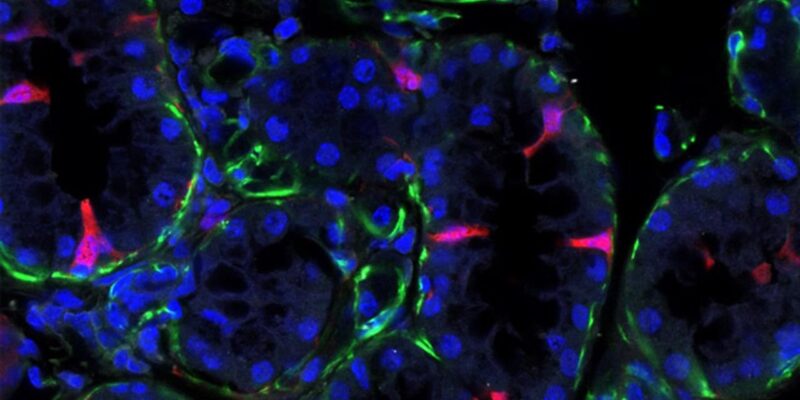Scientists from Scripps Research and the National Institute of Dental and Craniofacial Research have discovered a new type of salivary gland cell that is important for dental health.
The novel type of salivary gland cell known as an "ionocyte" helps to maintain healthy quantities of charged molecules — ions — of potassium, calcium, chlorine, and other electrolytes in saliva, as revealed by the researchers in Cell Reports on April 12, 2022. The researchers also discovered that this type of ionocyte secretes a critical growth factor (fibroblast growth factor 10, or FGF10), implying that it plays a role in salivary gland regeneration following injury.
"By researching these cells, we aim to create better treatments for the various medical disorders that impact salivary glands and associated glands like tear glands," says study co-senior author Helen Makarenkova, Ph.D., associate professor in Scripps Research's Department of Molecular Medicine.
Saliva is produced by salivary glands, which makes swallowing food much easier. Saliva also contains digestive enzymes, antibodies, and other immunological elements to fight against infection, and finely adjusted quantities of various ions to keep teeth and oral tissues healthy. Cancer-related radiation therapy in the head and neck region, as well as other medical problems such as autoimmune illnesses, might damage salivary glands.
"Every year, millions of Americans are diagnosed with dry mouth diseases, the origins of which are frequently unknown," says Olivier Mauduit, Ph.D., a postdoctoral research associate in the Makarenkova lab and study co-first author.
The team focused first on a growth factor protein called FGF10, which is important for the early development of salivary glands and is suspected to have a maintenance and repair function in adult salivary glands, according to co-senior author Matthew Hoffman, Ph.D., of the National Institute of Dental and Craniofacial Research. The researchers wanted to figure out which cells in adult salivary glands create FGF10.
The researchers looked at huge single-cell atlases of mouse gene activity and identified FGF10-expressing cells for further investigation. They discovered that whereas fibroblasts, which are mesenchymal cells, create FGF10 in very young mice, a different cell type, a sort of salivary duct-lining epithelial cell, takes overproduction in the second week of life.
The researchers discovered that this FGF10-producing epithelial cell contains molecular markers that indicate it is an ionocyte, an evolutionarily ancient cell type that regulates ion and associated chemical levels in local tissues.
The cystic fibrosis transmembrane conductance regulator protein is also discovered as one of the ionocyte's products. When this protein is missing in the lungs due to a hereditary mutation, it causes the lung disease cystic fibrosis. It is also recognized to play a significant function in the salivary and tear glands, where its lack contributes to Sjögren's disease, a prevalent inflammatory dry mouth/eye syndrome. The discovery of the cell type that produces CFTR in the adult salivary gland could lead to more effective treatments for the illness, according to the researchers.
The researchers also pointed out that this newly discovered ionocyte's ability to produce FGF10 distinguishes it from other ionocytes.
"The fact that this cell produces FGF10 in adult salivary glands implies that it could play a significant role in gland maintenance and healing following injury," says Vanessa Delcroix, Ph.D., a postdoctoral researcher in the Makarenkova lab.
Despite the fact that their initial research focused on mouse cells, the researchers discovered evidence of salivary gland ionocytes in a protein atlas of human tissues.
The researchers are currently conducting additional studies, including in human cells. Given the many parallels between salivary and tear glands, they believe that a greater knowledge of how these FGF10-producing ionocytes act in the adult salivary gland could pave the way for successful therapy for disorders affecting both.
Source: Scripps Research Institute




















Comments